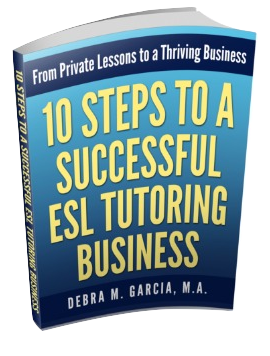How to Teach ESL Present Perfect Continuous Forms
Lessons teaching Present Perfect Continuous forms should first start with verb conjugation and then forms, followed by the functions of the tense.
The three essential elements of any thorough verb tense lesson are:
- conjugation,
- form, and
- function.
This page provides an overview to teach the Present Perfect Continuous verb tense. Note that this tense is also called the Present Perfect Progressive.
Present Perfect Continuous Tense Conjugation
The Present Perfect Continuous (or Present Perfect Progressive) is constructed this way:
- subject + have/has been + -ing
The conjugation is fairly simple. However, the learner must remember to use "has" for only the third person; and this tense has more individual components for the ESL/EFL student to remember and keep in order.
Here are some examples of Present Perfect Continuous conjugation of miscellaneous verbs with the subject pronouns I, you, he/she/it, they, and we.
- I have been talking. I have been learning. I have been dancing. I have been eating.
- You have been talking. You have been learning. You have been dancing. You have been eating.
- She/He/It has been talking. She/He/It has been learning. She/He/It has been dancing. She/He/It has been eating.
- They have been talking. They have been learning. They have been dancing. They have been eating.
- We have been talking. We have been learning. We have been dancing. We have been eating.
Present Perfect Continuous Forms
Here are the Present Perfect Continuous forms the ESL/EFL student must learn.
- Affirmative Usage (e.g., She has been studying English as a Foreign language for four years.)
- Negative Usage (e.g., She has not been living here since 2005.)
- Yes/No Questions (e.g., Have you been playing tennis for very long?)
- Short Answers (e.g., Yes, she has. No, she hasn't.)
- WH- Questions (e.g., What have they been doing?)
Present Perfect Continuous Functions
The Present Perfect Continuous has two functions.
1. The first function is to show the duration of an activity that began in the past and continues until the present time.
Here are some examples of this tense using this first function:
- She has been working on this project for three years.
- They have been acting strangely since they arrived.
2. The second function is to talk about something that has been in progress recently or lately.
Here are some examples of this tense using the second function:
- You look great! Have you been working out lately?
- I've been thinking about taking a trip to South America.
ELL Student Challenges
The biggest challenge ESL or EFL students have is deciding between Present Perfect Continuous forms and Present Perfect forms.
This challenge is because one of the functions of the Present
Perfect is to talk about an activity that has begun in the past and
continues until the present.
This is almost the same function as the Present Perfect Progressive; the difference is that the Progressive tense stresses duration.
The thing to stress to students is that the Continuous (or Progressive) tense is used when you want to emphasize the duration of an activity that started in the past and continues until now; otherwise either tense can be used with very little or no difference in meaning.
There is especially very little difference in meaning with verbs such as "teach," "live" and "work" when "for" or "since" are used. For example, "I have been teaching ESL to adults for ten years," and "I have taught ESL to adults for ten years." Both of these sentences have the same meaning. However, I may want to emphasize the duration if I want to impress a potential ESL job employer; in that case, I would use the Present Perfect Progressive.
Additional Teaching Resources
The above is a general overview to help you understand and
prepare verb tense lessons for the Present Perfect
Progressive/Continuous verb tense.
For additional help in teaching verbs, see my page on Teaching ESL Verb Tenses.
You can also consult a good grammar book. I use Azar's Understanding and Using English Grammar for clarification and exercises for my high intermediate to advanced students.
From Present Perfect Continuous Forms
to Teaching ESL to Adults Home Page


New! Comments
Have your say about what you just read! Leave me a comment in the box below.